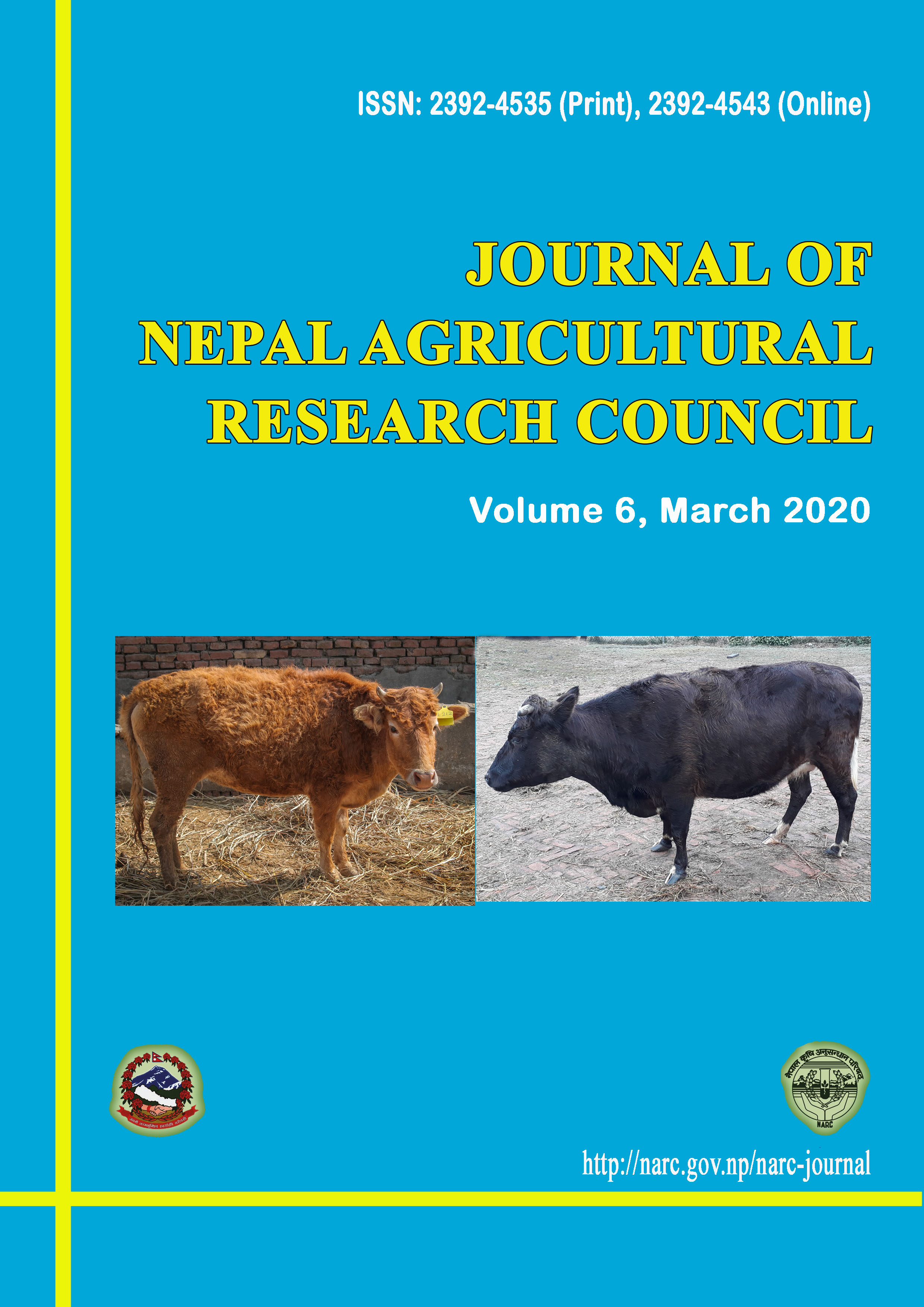Effect of Deficit Irrigation on Yield and Water Use Efficiency of Maize at Selekleka District, Ethiopia
DOI:
https://doi.org/10.3126/jnarc.v6i0.28124Keywords:
Grain yield, water use efficiency, alternate furrow irrigation, deficit irrigationAbstract
Irrigation water availability is diminishing in many areas of the Ethiopian regions, which require many irrigators to consider deficit-irrigation strategy. This study investigated the response of maize (Zea mays L.) to moisture deficit under conventional, alternate and fixed furrow irrigation systems combined with three irrigation amounts over a two years period. The field experiment was conducted at Selekleka Agricultural Research Farm of Shire-Maitsebri Agricultural Research Center. A randomized complete block design (RCBD) with three replications was used. Irrigation depth was monitored using a calibrated 2-inch throat Parshall flume. The effects of the treatments were evaluated in terms of grain yield, dry above-ground biomass, plant height, cob length and water use efficiency. The two years combined result indicated that net irrigation water applied in alternate furrow irrigation with full amount irrigation depth (100% ETc AFI) treatments was half (3773.5 m3/ha) than that of applied to the conventional furrow with full irrigation amount (CFI with 100% ETc) treatments (7546.9 m3/ha). Despite the very significant reduction in irrigation water used with alternate furrow irrigation (AFI), there was insignificant grain yield reduction in maize (8.31%) as compared to control treatment (CFI with100% ETc). In addition, we also obtained significantly (p<0.001) higher crop water use efficiency of 1.889 kg/m3 in alternate furrow irrigation (AFI), than that was obtained as 0.988 kg/m3 in conventional furrow irrigation (CFI). In view of the results, alternate furrow irrigation method (AFI) is taken as promising for conservation of water (3773.5 m3/ha), time (23:22'50" hours/ha), labor (217.36 USD/ha) and fuel (303.79 USD/ha) for users diverting water from the source to their fields using pump without significant trade-off in yield.
Downloads
Downloads
Published
How to Cite
Issue
Section
License
This license enables reusers to distribute, remix, adapt, and build upon the material in any medium or format for noncommercial purposes only, and only so long as attribution is given to the creator.




